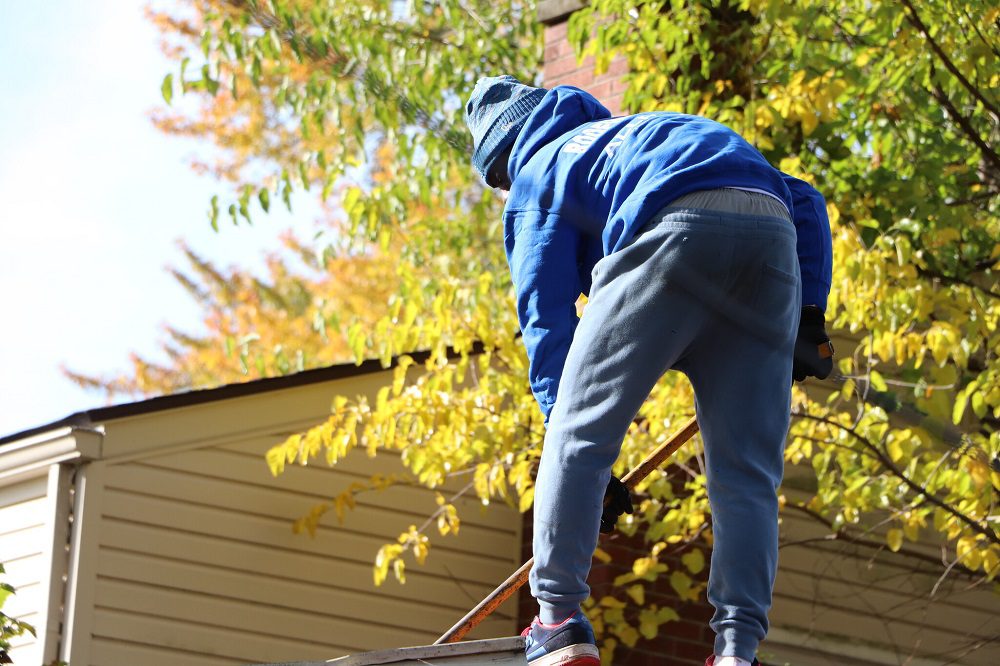Roofing nails might be utilized to introduce shingles and most roofing underlayment. Nails can be made of:
- Aluminum
- Copper
- Stainless steel, or
- Galvanized steel (zinc-coated)
Some roofing nail materials are more appropriate for specific geographies than others. For example, if you live in a beachfront region where your house is presented to salt, stainless steel roofing nails might be a decent decision. Galvanized roofing nails will in general oppose rust formation, and they are an appropriate choice for asphalt shingles. It requires utilizing either galvanized steel, stainless steel, or aluminum nails to join shingles.

Important Features to Note About Roof Nailing
Fastener Size
According to the building law stated by the International Building Code, roofing nails should have a base 12-gauge shank and a 3/8-inch diameter head.
Penetration
When nailing shingles, legitimate penetration into the roof deck is fundamental to guarantee the nail and shingle stay secure. For all shingles, roofing nails ought to infiltrate the wood deck by at least ?-inch or totally through the roof deck by at least 1/8-inch.
General Guidelines for Nailing Shingles
To guarantee ideal performance of your asphalt roofing shingles, make certain to follow these overall bearings for appropriate nailing:
- Utilize the correct roofing nail material, size, and grade as supposed in the shingle nailing guidelines.
- Attach shingles with corrosion-safe nails.
- Introduce the suggested number of nails per shingle. For shingles, either a 4-or 6-nail attaching design contingent upon the roof’s incline and building code prerequisites. As a rule, 4 nails are satisfactory.
- Position the nails properly according to the shingle establishment directions.
- Adjust shingles appropriately to maintain a strategic distance from nail introduction.
Where to Nail Shingles
Every shingles producer has their set instructions for accurate nailing and the exact spot where nails should be driven through. Your roofing contractor is meant to follow the rule and ensure not to overdrive nails that may prompt water invasion.
How Shingles Are Installed
The points of interest of how shingles are laid on your roof change by the manufacturer. Some roofing shingles are applied with a 6-1/2-inch counterbalance and a 5-5/8-inch presentation over a readied roof deck. Contractors start at the lower part of the roof and work across the roof’s surface and up. Legitimate overlapping conceals the nails and gives a consistent, appealing look to your roof.
Driving Roofing Nails for Shingles
Roofing nails should be driven by hand with a hammer or with an appropriately changed pneumatic nail gun. Nail guns that are inappropriately changed can bring about either under penetration or over-penetration of the roofing nails, which at that point influences the shingle’s performance. It can likewise cause nail corrosion, fixing disappointments, raised shingle tabs, clasping, and shingle blow-offs.
Roofing nails are normally positioned no nearer than 1 inch from the edge of the shingle according to the manufacturer’s particulars.
Correcting Nailing Mistakes
Nailing errors should be fixed right away. Under driven nails can be properly tapped in with a hammer. Warped or overdriven nails should be taken out, and the openings should be filled in with asphalt roofing concrete. Another nail should be driven in a close-by spot to make sure about the shingle. If this isn’t possible, the whole shingle should be supplanted.

As the editor of the blog, She curate insightful content that sparks curiosity and fosters learning. With a passion for storytelling and a keen eye for detail, she strive to bring diverse perspectives and engaging narratives to readers, ensuring every piece informs, inspires, and enriches.









